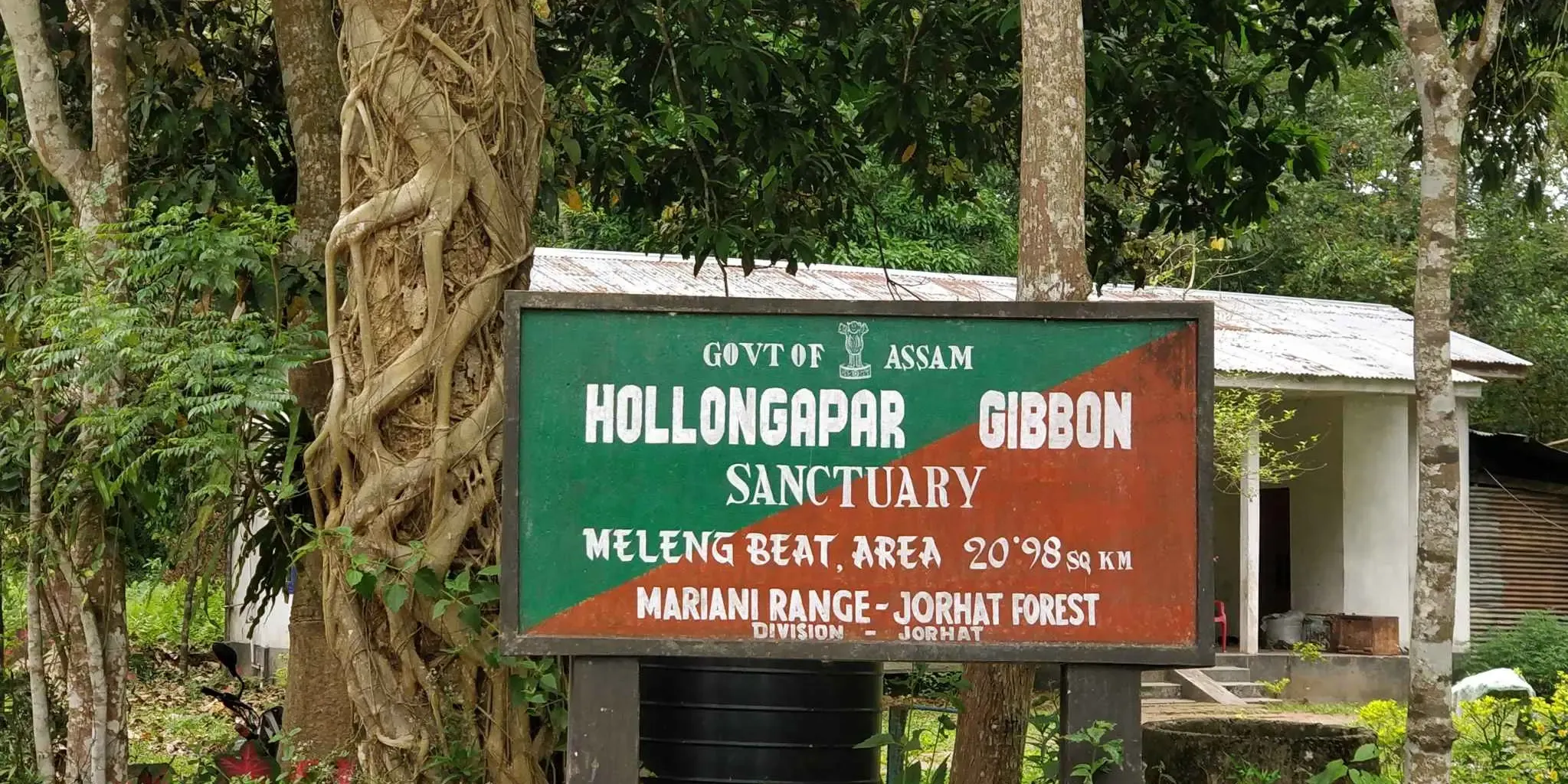Gibbon Hollongapar Wildlife - Information to know before visiting

Hollongapar GIBBON WILDLIFE SANCTUARY
Hollong - the state tree of Aaasm. The story goes back like this when the British came and saw these long trees, they asked How Long? And it became Hollong Tree.
Just like “there is a brown crow” was a way to say Darwazabandh Karo (close the door in Hindi — from Satyajit Ray’s Feludaa
It is only 20 sq KM of Sanctuary. Actually, it is the oldest miscellaneous plantation having Dipterocarpus and Mesua as dominant species It was declared a Reserve by the British way back in 1881, (53years after the advent of British rule) The original forests used to extend to the foothills of the Patkai mountain range. Since then, the forest has been cleared mainly for tea growing by the British. In the 1960s people from Majuli were settled here, so small villages have come up also. Now it is a small tropical wet forest 20 sq km in size.
The place is easily accessible and has 7 species of primates. Only walks are allowed and Hollock Gibbon easily sighted. The area has Northeastern India’s only nocturnal primate – the slow loris But you have to be overnight in Gibbon itself to see the slow loris. The accommodation is basic inside Gibbon. (night visit is now banned) There is a presence of pigtailed and stump-tailed macaque which can be sighted with moderate luck. In winter (starting late October) it is good for forest birds several species of forest butterflies and giant squirrel also can be seen. The dense forest makes it difficult to see too many birds. Guides claim that in the main road cutting through this small sanctuary more than 100 species of butterflies can be identified in the months of Oct and November as also in March-April.
Though a plantation it looks like a natural forest with all stories of canopy extant. It’s a natural-looking rain forest and surely worth a visit. The sanctuary is now insular and has no connectivity with a larger forest belt. But earlier it had contiguity with Disoi Valley Reserved Forests(RF) Disoi RF, Tiru RF and Geleki RF bordering Nagaland and was the natural abode of all these primates. Due to large scale human-induced degradation especially from Nagaland the Gibbon Sanctuary is what is left. A pocket herd of the elephant is largely resident in this sanctuary and leopards are also found. Sighting of the groups of primates requires prior arrangement with forest authorities. in this unique forest, It is the best place for orienting a naturalist to the representative rain forest habitat condition coupled with interesting primate sighting especially the Hollock Gibbon which is the only ape available in India. Photographers usually try their luck.
It does not take long to explore Gibbon usually people do it ex-Kaziranga they take a hired vehicle to go to Gibbon WLS and leave very early 4 am so they reach the place 128 km (2 and half hours) and then Gibbon activity is over they come back to visit Eastern Range in Kaziranga on same day. The place is 30 odd minutes from Jorhat airport and so on the last day of the tour, it is fruitful to visit this very small sanctuary for those flying out via Jorhat airport. Jorhat airport is 90 km away.
About the Author

Santanu
A nature lover, runner, travel enthusiast, and occasional baker. He dives into web development and cloud technologies, always exploring and building with curiosity.
View all posts →

